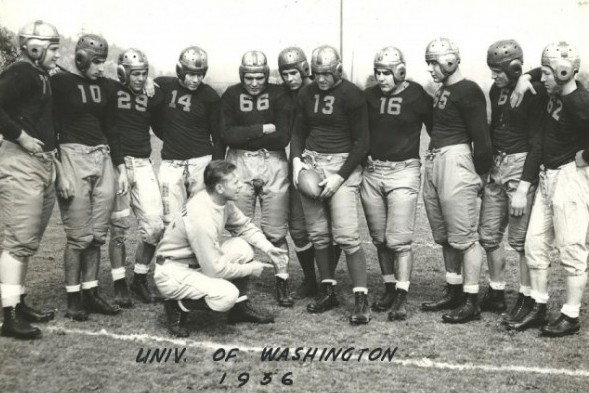
By David Eskenazi and Steve Rudman
It has been nearly 70 years since James Merlin Phelan last coached a football game for the University of Washington, a tenure that ended with a 14-13 upset of Southern California in Los Angeles, and his subsequent summons into the offices of Ray Eckmann, the Huskies athletic director.
Eckmann, a Husky halfback from 1919-21, had not demanded Phelans presence in order to lavish him with praise or a raise, but to gleefully inform Phelan that he was a goner.
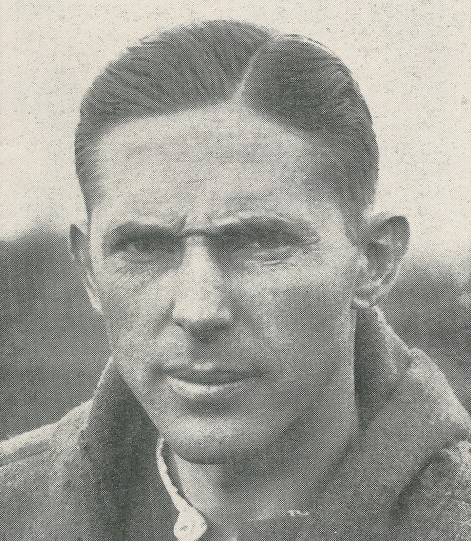
Phelan had won a lot of football games during his 12 seasons at the school, a stretch in which Washington captured a Pacific Coast Conference title, appeared in two bowl games, and experienced only two losing seasons.
Phelan had also brought a spirit of adventure and a sense of humor to the Washington program, facts which Eckmann conceded.
But Eckmann also knew the other side of this Irishman, Jimmy Phelan the hard-drinking, hell-with-politics side, and his notorious sarcasm. Phelan never had difficulty saying what was on his mind, no matter whose feelings he bruised or whose ears turned scarlet. As a consequence, Phelan always inspired a violent reaction, with little middle ground.
Jimmy Cain played under Phelan between 1933-36 and made All-America as a halfback his senior year.
As far as Im concerned, Cain once told a Seattle reporter, Jimmy Phelan was the greatest. He was one of the greatest guys Ive ever met.
Jack Keene had an opposing view. A UW student in the 1930s, Keene served as Washingtons football stat man for half a century.
He was a snarly little guy, Keene said. I took his class, Elements of Football. He was not a particularly loveable guy.
Some years after Phelan left Washington, he coached the New York Yankees (who morphed into the Dallas Texans) of the All-America Football Conference, a team that included offensive lineman Art Donovan, who later became a Pro Football Hall of Famer following a long career with the Johnny Unitas-led Baltimore Colts.
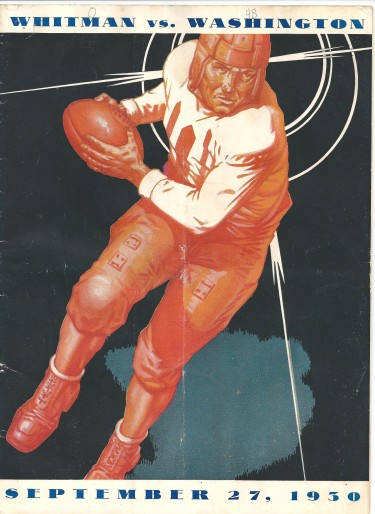
Ill never forget playing for that man, Donovan wrote in his book, Fatso: Football When Men Were Really Men. He was a real pisser. Nothing phased Jimmy Phelan.
‘I remember the first Pro Bowl game I went to, after the 53 season. We were in the Ambassador Hotel in Los Angeles, and Doak Walker and Bobby Layne had thrown a monster party in one of the suites.
Well, as these parties will, this one had degenerated into an all-night drinking contest. Over in one corner of the suite there were about a half a dozen guys throwing up on the carpet.
“Jimmy Phelan and his wife walk in, take in the situation and, without missing a beat, Phelan says to me, Well, Donovan, youve certainly got a lot of fine athletes gathered here tonight, dont you.
Emmett Watson may have placed Phelan in the best perspective. In one of his old Seattle Post-Intelligencer classics, Watson wrote, He coached hard, drank hard and was anything but circumspect. He was the antithesis of the Organization Man. He said almost anything that was on his mind.
“He was an individualist, a swift-moving catalyst who saw all too clearly that the means of football coaching survival were not always found on the field. Id rather, he once said, outsmart those bastards on the upper campus than knock off Oregon State.
Born Dec. 5, 1892 in Sacramento, Phelan grew up in Portland, and put himself through Columbia High School by working in various fisheries at the mouth of the Columbia River.
He entered the University of Notre Dame in 1915 and waited tables to earn his keep. Phelan came off the bench in his first game and led the Irish to a 32-0 victory over Alma College. For the next three years, he was Knute Rockne’s starting quarterback, and graduated with Rockne saying, “He was one of the smartest and gamest quarterbacks in Notre Dame football history.”
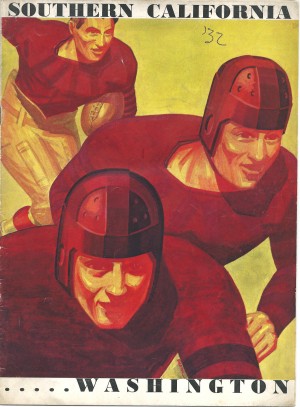
Phelan then served a hitch in the service during World War I and, after that, became an assistant coach at Missouri. In 1951, Purdue hired him as its head coach, and Phelan won 35 games over the next eight seasons.
After Enoch Bagshaw (1920-29) was let go by Washington after a 2-6-1 flop in 1929, Phelan received a call from Dr. Albert Strauss, a prominent UW alum based in Chicago. Strauss asked Phelan if he would be interested in the Washington job. Phelan expressed interest, Strauss made some calls, and Phelan got the job.
It is not difficult to find words to describe Phelan. Just open the dictionary and they all seem to apply. Many who watched him coach contended that he was the best bench coach to lead a Washington team, that his motivational maneuvers with players were legendary, that no smarter coach ever lived, notable remarks considering that Gil Dobie and Bagshaw had preceded him. But others maintained that Phelan was overrated and too conservative, that he talked more than he delivered.
Keene fell into that category.
When he came out here (from Purdue), Keene said, he was alleged to be the guy who would open up his bag of tricks. The knock on Bagshaw was that he played predictable ball. Phelan was supposed to be a progressive coach, but he was super conservative. He never performed any miracles.
Maybe not. But Phelan won 51 of 99 conference games while employed by Washington, a coaching record that still ranks among the best in league history. He also coached the Huskies to the Rose Bowl following the 1936 season, and took them to the Pineapple Bowl in Honolulu in December of 1937, becoming the first coach to lead UW to consecutive bowl games.
Phelan tutored nine players who received All-America recognition, including three consensus choices, Max Starcevich (1936), Rudy Mucha (1940) and Ray Frankowski (1941). Of the 33 players listed on Washingtons All-Time Team in 1950, 17 played for Phelan.
Of the 11 Huskies enshrined in the National Football Foundation College Football Hall of Fame, three Paul Schwegler (elected 1967), Vic Markov (1976) and Starcevich (1990) played under Phelan.
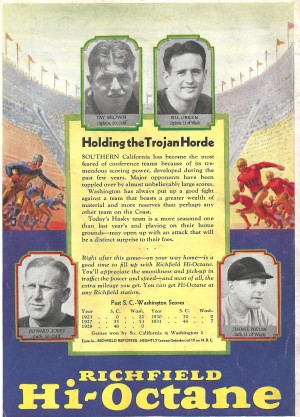
Many of Phelans best players came from outside the state of Washington. A significant number, including Starcevich and Frankowski, were recruited on behalf of Phelan by Strauss, who played a major role in the UW hiring Phelan, from ethnic neighborhoods of Chicago.
Phelan recruited a number of others, using contacts he had established at Notre Dame, Missouri and Purdue. If he did nothing else, Phelan pioneered national recruiting at Washington. A prime example was Jimmy Cain, an Oklahoman that Phelan got wind of through a contact at Missouri.
Phelan had gotten a letter about me so he sent Pest Welch (then a Phelan assistant, later a UW head coach) down to Holdenville (OK.) to look me over, Cain told the Seattle Post-Intelligencer. I got a bus ticket and 15 dollars, and it took me five days to get to Seattle. Id never seen so much water. In Oklahoma, we didnt have enough water to take a bath in. So I arrived and lived with Pest Welch for a week.
Cains story is similar to those of many Husky players who took the Northern Pacific to Seattle in those years to play football for Phelan. Cain first went to work in a Bellingham cannery, sliming fish. Then he went to Alaska to work the traps on tugboats. Cains pay ran to about 50 cents an hour.
That was 1933, and that was how Cain was able to get through the University of Washington. Before he graduated, Cain became Washingtons fourth All-America running back. That was in 1936, when Phelans Huskies finally showed something.
Phelans first three Washington teams were decent but not spectacular, going 5-4-0, 5-3-1 and 6-2-2. But his next five won 30, lost just 12, tied four and played in two bowl games. The best of those clubs, the one he introduced 76 years ago this fall, became the centerpiece of one of the best sports years in Seattle history.
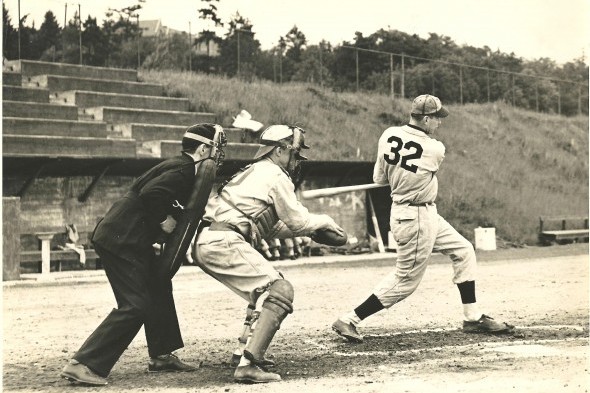
That year 1936 saw Washingtons eight-man crew capture an Olympic gold medal in Berlin, right under Hitlers nose. UW swimming champion Jack Medica won a gold and two silver medals at the same Games. The UWs star basketball player, Ralph Bishop, also won a gold medal as part of the USA national team (see Wayback Machine: UW Bonanza At The 1936 Olympics).
The UW basketball team had a 17-game winning streak, a 25-7 record, and just missed representing the U.S. in Berlin. Local boxer Freddie Steele won the world middleweight title, scoring a unanimous decision over Babe Risko at Civic Stadium (first world title match in Seattle).
The Huskies, coming off a 5-3-0 record in 1935, opened the 1936 season Sept. 26 with a 14-7 loss to nationally ranked Minnesota in front of 40,000 fans, who might have gone home happy if Byron Haines hadnt muffed a fourth-quarter punt that set up Minnesotas game-winning touchdown, extending the Gophers winning streak to 19 games.
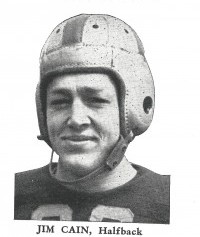
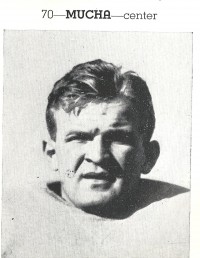
For the Idaho game Oct. 3, Phelan trotted out one of his favorite ploys: using a team of sophomore substitutes to soften up the opponent for his junior and senior starters.
The subs fought the Vandals to a scoreless tie midway into the second quarter. Then Phelan rushed his fresh stars Haines, Fritz Wasakowitz, Elmer Logg and Ed Nowogrowski to complete a 22-0 victory.
This was not Phelans first use of his so-called Shock Troops. Phelan unveiled his Shock Troop philosophy, which he borrowed from Knute Rockne, in his first game as Washingtons head coach Sept. 27, 1930.
The Huskies played Whitman and wore solid gold uniforms, which Phelan said would be the proper gridiron attire for his unveiling of the Notre Dame Shift. Except that Phelan did use the shift. Rival scouts occupied the stands and Phelan didnt want them to see his new offense. Besides, he could beat Whitman without it. In addition, Phelan didnt want the scouts to acquire too much dope on his first team. So the second unit started the game and played most of it, a 48-0 win.
Phelan used his Shock Troops as a matter of custom, dividing the squad primarily into sophomore and senior units (freshmen were not eligible), and liked to start the sophomores, particularly in big games.
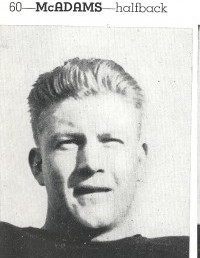
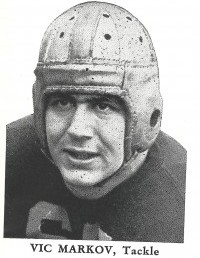
What the hell, Phelan once said, they dont know enough to get beat.
One time in 1934, Phelan started his sophomores against USC in Los Angeles. After the sophomores went out and scored, the seniors were so irate that they scored, too. Washington won 14-7.
Another time, in 1932, he vexed Oregon scouts by keeping his entire starting lineup on the bench during a game against Montana.
I didnt want to take a chance on the regulars getting hurt, Phelan quipped.
He always started his sophomores against the strongest teams, Cain explained. He did that my second year against Oregon.
For the third game of the 1936 season, Phelan again employed his Shock Troop strategy at UCLA in front of 50,000 fans Oct. 10. The subs held the Bruins scoreless for a quarter, and then the veterans entered the fray. Al Cruver and Bud Douglas scored the touchdowns that gave Washington a 14-0 victory.
Haines and Cain scored TDs in Washingtons 19-7 victory over Oregon State Oct. 17, and the pair tallied again in a 13-0 triumph over Cal Oct. 25. On Oct. 31, Haines scored the touchdown that gave Washington a 7-0 win over Oregon, just the Huskies second victory over the Ducks since 1928.
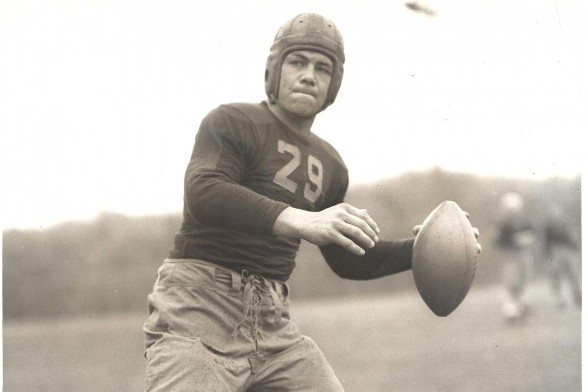
Cain scored two touchdowns against Stanford Nov. 7, and the Huskies probably would have won if they hadnt fumbled twice inside the five-yard line while driving for scores. The 14-14 tie gave Washington a 5-1-1 record.
After Washington defeated USC Nov. 15 in a Homecoming contest witnessed by 40,000 (Cain scored another TD), the Huskies needed only to defeat Washington State to secure its first Rose Bowl invitation since the 1925 squad finished the regular season 11-0-1.
I remember we had them 20-0 at the half, Cain recalled of that game against the Cougars. In the locker room, Phelan gave us hell. He told us, I want you to go out there and double that score. Cain, you go out there and block like hell.
Cain blocked like hell and the Huskies doubled the score, winning 40-0. The only bad thing: Cain suffered a broken toe, an injury that came to haunt the Huskies when they faced off against the University of Pittsburgh in the Rose Bowl.
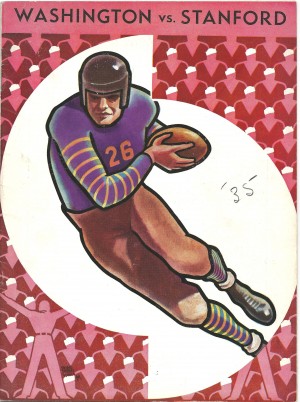
After receiving the invitation to play in Pasadena, Washington received permission to select its opponent. Passing over Louisiana State, a team most figured the Huskies could beat, the UW picked the Panthers after assessing them as relative softies, even though Pitt had a 7-2-1 record with victories over Notre Dame (26-0), Nebraska (10-6) and Ohio State (6-0).
A huge underdog, Pittsburgh clobbered Washington 21-0.
Phelan could be outrageously cavalier in his approach. Prior to that 1937 Rose Bowl, the Huskies spent a good deal of time carousing and sampling various California diversions instead of practicing.
The only thing we didnt do at the Rose Bowl was train, Cain admitted years later. The first week there all we did was fish.
Phelan became a man around whom anecdotes accumulated. In 1930, when the Huskies played USC, they stopped a Trojan drive deep in Washington territory. Phelan danced around the sidelines like a man possessed, yelping, Now we got ’em? Go for the jugular! Phelans behavior must have confused his players because Washington was already well on its way to a 32-0 defeat.
Then there was the USC game in 1938. When the Huskies arrived at the train station in Los Angeles, Phelan assembled his players and told them they were nowhere near good enough to be on the same field with the Trojans. He told them that he ought to put them back on the train rather than make them endure a humiliation.
What the hell, Phelan said, two of my tackles wear glasses.
The next day the Huskies beat USC 7-6, knocking the Trojans out of the Rose Bowl.
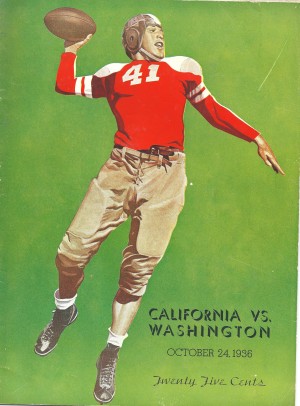
Of all of Phelans accomplishments at Washington, his mastery of USC is the most curious.
Starting in 1934, Washington defeated USC five consecutive times (Don James never beat USC more than three times in a row). Phelan delighted in doing a number on the Trojans.
Phelans teams really had the upper hand on USC, said Keene. Those were some of the most memorable games of the time because USC had all these tremendous ballplayers.
Phelan enjoyed his skirmishes with USC because he hated Howard Jones so much. Phelans beef with the USC head coach stemmed from derogatory public comments Jones made about UW following USCs 32-0 wipe-out of Washington in 1930, Phelans first year at Washington.
Oddly, while Phelans clubs beat USC, they had a lot of trouble with Stanford, and never did beat Minnesota (Phelan created the intersectional series with the Gophers, one of the most notable in Washingtons first 50 years), although all were classics. Only one of the games was decided by as many as two touchdowns, that in 1938 (15-0).
Despite Phelan’s success against USC and his routinely high conference finishes, Eckmann had his fill of Jimmy Phelan by 1941 (he hated that Phelan drank beer with his players at the Blue Moon Tavern in the U-District), deciding he would replace Phelan with Welch, a Washington assistant who had been an All-America halfback under Phelan at Purdue.
Phelan accomplished some things no other Husky head coach duplicated. In addition to beating USC five consecutive times, he is the only Husky head coach to simultaneously tutor two players who would later become members of the College Football Hall of Fame, Max Starcevich and Vic Markov, in 1936.
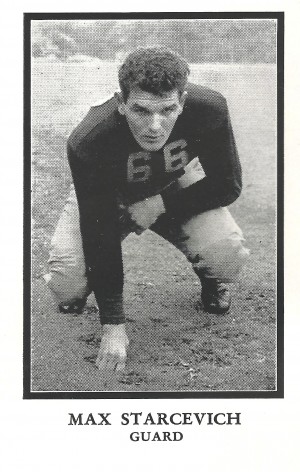
Phelan coached the first University of Washington players selected in the NFL draft (Starcevich was the first, going in the third round of the 1937 NFL draft, to the Brooklyn Dodgers), including the UWs first-ever No. 1 picks (Dean McAdams and Rudy Mucha both in the first round in 1941).
Because of Phelans city-wide popularity, he had no idea that Eckmann planned to fire him. But when Phelan arrived in Eckmanns office, Eckmann asked the coach to sit down. Eckmann picked up the telephone and, without a word to his coach, called United Press International.
This is Ray Eckmann, Eckmann told the wire service. And I have just fired James Phelan.
Jimmy didnt know a thing about it, said Cain. Otherwise the alums would have thrown Eckmann out on his butt.
Phelan went on to coach at St. Marys where, in 1946, he returned to Washington and beat the Huskies and his former assistant, Welch, 24-20 (first modern-era former UW coach to beat the Huskies). Later, Phelan coached a number of professional teams and (first former UW coach to work at the pro level), after that, sold real estate in Sacramento.
Phelan was 73 when he wanted to get married again (his first wife died). He had a candidate in mind, a woman he had met years before who lived in Hawaii. Out of the blue, Phelan called her on a Friday and, without many preliminaries, asked if she had any faults.
She told Phelan she had two faults. She said shed never leave Hawaii, her biggest fault was that she liked Phelan. He asked her to marry him. She did, the following Tuesday.
About a year and a half later, the 70-year-old Mrs. Jimmy Phelan came down with a triple hernia at the same time the old ex-coach suffered a cracked knee. Phelan was asked about this double dip on the DL.
We were trying too hard, he said.
Phelan live long enough to attend his induction ceremony into the College Football Hall of Fame. He died a year later, Dec. 14, 1974, in Honolulu.
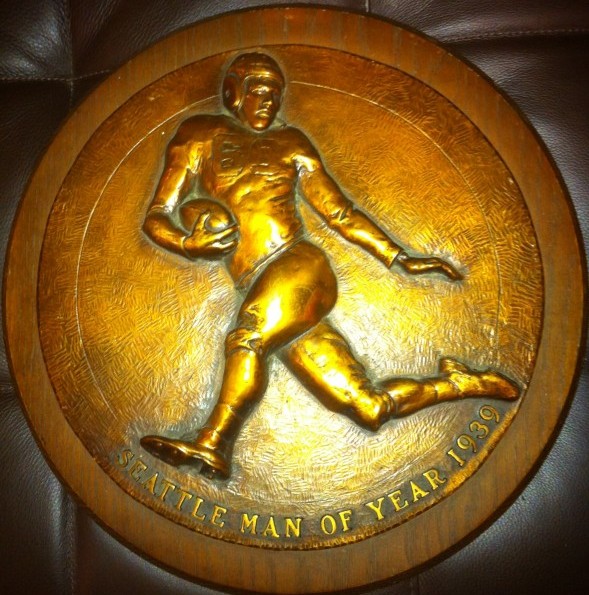
——————————————
Many of the historic images published on Sportspress Northwest are provided by resident Northwest sports history aficionado David Eskenazi. Check out Davids Wayback Machine Archive. David can be reached at (206) 441-1900, or at seattlesportshistory@gmail.com

9 Comments
I like this guy. A lot.
He was a snarly little guy, Keene said. I took his class, Elements of Football. He was not a particularly loveable guy.
Phelan is one of the great characters in UW football history. During his time, he was on the front page of the sports section nearly every day. I like him as well. Thanks for visiting, Michael.
I like this guy. A lot.
“He was a snarly little guy,” Keene said. “I took his class, ‘Elements of Football.’ He was not a particularly loveable guy.”
Phelan is one of the great characters in UW football history. During his time, he was on the front page of the sports section nearly every day. I like him as well. Thanks for visiting, Michael.
I knew the Blue Moon was old, but I didn’t know it was THAT old. Also, either sports was more fun back then, or you guys are just really good at highlighting the good times and carrying-on, either way, great read.
I’ve talked to dozens of people who knew Phelan personally, and Emmett Watson’s quotes sum him up perfectly. Thanks for visiting.
I knew the Blue Moon was old, but I didn’t know it was THAT old. Also, either sports was more fun back then, or you guys are just really good at highlighting the good times and carrying-on, either way, great read.
I’ve talked to dozens of people who knew Phelan personally, and Emmett Watson’s quotes sum him up perfectly. Thanks for visiting.
Your work is totally appreciative and informative.